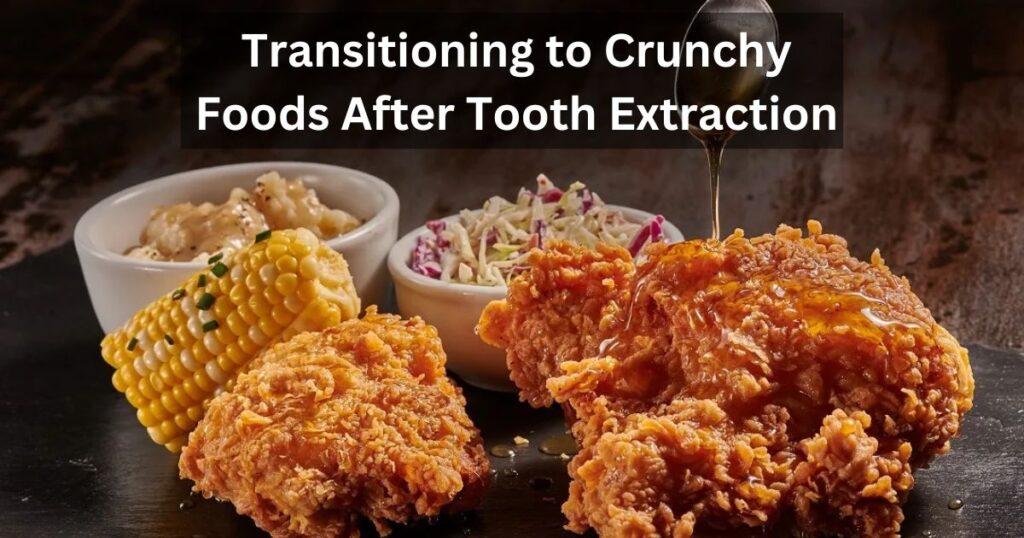Allowing yourself ample time to heal after dental surgery is crucial for a successful recovery. However, maintaining a balanced diet is equally essential to provide your body with the nutrients it needs to repair damaged tissues. Transitioning back to your regular diet immediately may pose risks, as chewing could dislodge sutures or blood clots vital for healing. To aid in your recovery process and ensure optimal healing, we’ve curated a list of 50 soft foods to eat after dental surgery.
Some food packaging may recommend soaking certain items before consumption, particularly milk or broth-based products. Following these instructions can be advantageous, allowing you to enjoy your favorite foods without compromising your healing process. For example, soaking bread in soup overnight not only enhances its nutritional value but also makes it softer and easier to consume, minimizing discomfort in your mouth during recovery.
Why is Eating Soft Foods Necessary After Dental Surgery?
Eating soft foods after dental surgery is essential for several reasons. Oral surgical procedures such as dental implants, tooth removal, or wisdom tooth extraction can leave your jaw and mouth feeling tender and sore. Consuming soft foods helps to minimize irritation and discomfort, allowing the treated areas to heal properly.
Biting down on hard or crunchy foods can exert pressure on the surgical site, increasing the risk of dislodging sutures or blood clots crucial for the healing process. By opting for soft foods, you provide your body with the nourishment it needs while minimizing the strain on your mouth, promoting faster recovery and optimal healing.
Soft Foods for Optimal Healing After Dental Surgery

After undergoing dental surgery, it’s crucial to prioritize your diet to support optimal healing. Soft foods play a vital role in this process by providing essential nutrients without exerting pressure on the surgical site. These foods are gentle on the mouth, reducing irritation and discomfort while allowing the body to rebuild damaged tissues effectively.
Incorporating soft foods into your post-surgery diet not only promotes healing but also helps prevent complications such as dislodging sutures or blood clots. By selecting from a variety of soft options, you can ensure that your recovery period is smooth and successful, facilitating a quicker return to normalcy.
General Guidelines for Soft Foods After Surgery
When choosing soft foods to eat after your oral surgery, keep these general guidelines in mind:
- Stick to cool or room temperature foods at first. Very hot foods could irritate your mouth and surgical sites.
- Avoid using straws for drinking or excessive suctioning as this can dislodge blood clots.
- Focus on getting adequate protein and nutrients even with soft foods. This helps facilitate healing.
- As you start to recover, you can gradually progress from pureed foods to softer solids over a few days. But stick to gentle foods for at least a week.
- Introduce new foods slowly after the first 1-2 days to spot any irritants. Everyone heals differently.
Getting good nutrition from soft foods during your recovery period is important, as your body needs energy and strength to repair itself after surgery. The following diet gives you options.
50 soft foods to eat after tooth extraction
After a tooth extraction, it’s important to follow a soft foods diet to aid in the healing process and avoid irritating the surgical site. Here are 50 soft foods that are gentle on the mouth and easy to eat:
- Yogurt
- Mashed potatoes
- Applesauce
- Scrambled eggs
- Smoothies (avoid seeds)
- Oatmeal
- Cottage cheese
- Pudding
- Ice cream
- Soup (blended)
- Jell-O
- Mashed bananas
- Avocado
- Soft-cooked vegetables
- Rice pudding
- Macaroni and cheese
- Hummus
- Cottage cheese
- Pureed fruit
- Mashed sweet potatoes
- Gelatin desserts
- Milkshakes
- Tofu
- Creamed spinach
- Soft-boiled eggs
- Custard
- Smooth peanut butter
- Cheese sauce
- Soft bread (without crust)
- Cooked pasta
- Soft fruits (peaches, pears)
- Blended soups (vegetable, potato)
- Instant oatmeal
- Applesauce
- Cooked cereal (cream of wheat)
- Fruit smoothies (no seeds)
- Fruit-flavored gelatin
- Mashed carrots
- Guacamole
- Soft-cooked lentils
- Cheese omelet
- Mashed squash
- Instant mashed potatoes
- Cream of wheat
- Mashed turnips
- Pureed beans
- Custard
- Butternut squash soup
- Smoothies with protein powder
- Instant pudding
These soft foods can provide essential nutrients while minimizing discomfort during the healing process after a tooth extraction. Be sure to consult with your dentist or oral surgeon for specific dietary recommendations based on your individual needs and recovery timeline.
Transitioning to Crunchy Foods After Tooth Extraction

After getting a tooth pulled out, you need to slowly start eating crunchy or hard foods again. Your dentist will tell you when it’s okay to do this. You’ll begin with soft foods and move to harder ones as you heal. It’s important to take your time and not rush, as eating hard foods too soon can cause pain or other problems. Pay attention to how your mouth feels and follow your dentist’s advice closely for a smooth recovery and healthy mouth.
Also Read: Which Gum Does Not Stick To Dentures?
Dos and Don’ts for Recovery
Here are essential guidelines to follow for a smooth recovery after dental surgery: Dos and Don’ts that can make a significant difference in your healing process.
Dos:
- Drink plenty of water to stay hydrated and aid in the healing process.
- Rinse your mouth gently with warm salt water to reduce discomfort and swelling.
- Follow your dentist’s advice on when it’s safe to use a straw again after surgery.
- Stick to soft foods that won’t irritate your gums or surgical sites.
- Be cautious with hot, spicy, or acidic foods that may cause discomfort.
- Take prescribed pain medication as directed by your dentist or oral surgeon.
- Practice good oral hygiene, but be gentle around surgical areas.
- Contact your dentist if you have any concerns or questions during your recovery.
Don’ts:
- Avoid drinking alcoholic, caffeinated, or carbonated beverages, as well as hot drinks.
- Don’t eat hard or crunchy foods that could damage surgical sites or dislodge blood clots.
- Steer clear of spicy foods that may cause irritation or inflammation.
- Refrain from smoking for at least 48 hours after surgery, as it can hinder the healing process and cause complications.
- Don’t skip follow-up appointments with your dentist or oral surgeon.
- Avoid vigorous rinsing or spitting, as this may disrupt blood clots and slow down healing.
- Don’t consume sticky or chewy foods that could get stuck in surgical areas and cause discomfort.
- Refrain from touching or poking at surgical sites to prevent infection or further injury.
Conclusion
In conclusion, adhering to a diet of soft foods after dental surgery is crucial for proper healing. It’s essential to follow the recommended guidelines provided by your dentist or oral surgeon to ensure a smooth recovery. Remember to stay hydrated, avoid certain foods and habits, and reach out to your dental care provider if you have any concerns. At Franklin Dental, we prioritize your post-surgery care and are here to support you every step of the way. Feel free to contact us with any questions or needs as you recover from your dental procedure.











